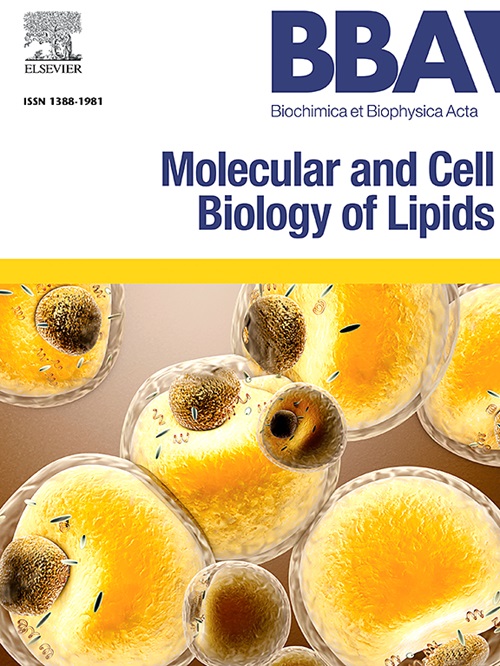Molecular basis for regulation of the class I phosphoinositide 3-kinases (PI3Ks), and their targeting in human disease
IF 3.3
2区 生物学
Q2 BIOCHEMISTRY & MOLECULAR BIOLOGY
Biochimica et biophysica acta. Molecular and cell biology of lipids
Pub Date : 2025-09-07
DOI:10.1016/j.bbalip.2025.159689
引用次数: 0
Abstract
The class I phosphoinositide 3-kinase pathway (PI3K) is a master regulator of cellular growth, and plays essential roles in controlling immune cell function, metabolism, chemotaxis and proliferation. Activation of class I PI3Ks generates the signalling lipid PIP3 that activates multiple pro-growth signalling pathways. Class I PI3Ks can be activated by multiple plasma membrane stimuli, including G-protein coupled receptors, Ras superfamily GTPases, and receptor tyrosine kinases. The dysregulation of class I PI3Ks is critical in the progression of many human diseases, including cancers, immunodeficiencies, and developmental disorders. Highlighting this is frequent oncogenic mutations (2nd most frequently mutated gene in all human cancers) in PIK3CA encoding the p110α catalytic subunit of class IA PI3K. The class I PI3Ks are obligate heterodimers composed of a catalytic and regulatory subunit, split into two subclasses, class IA and class IB. Recent elucidation of the structures of class I PI3Ks bound to activating stimuli, with activating disease-linked mutations and bound to allosteric conformational selective inhibitors/activators, has revealed extensive insight into the molecular basis of class I PI3K regulation. This review will summarize our current molecular knowledge of class I PI3K regulation, as well as how this information is being used to generate both small molecules and biologics that can either inhibit or activate kinase activity as potential therapeutic agents and biochemical tools.
I类磷酸肌肽3激酶(pi3k)调控的分子基础及其在人类疾病中的靶向作用。
PI3K (class phosphoinositide 3-kinase pathway)是细胞生长的主要调控因子,在控制免疫细胞功能、代谢、趋化和增殖等方面发挥着重要作用。I类pi3k的激活产生信号脂质PIP3,它激活多种促生长信号通路。I类pi3k可被多种质膜刺激激活,包括g蛋白偶联受体、Ras超家族gtp酶和受体酪氨酸激酶。I类pi3k的失调在许多人类疾病的进展中至关重要,包括癌症、免疫缺陷和发育障碍。最突出的是PIK3CA编码IA类PI3K的p110α催化亚基的频繁致癌突变(所有人类癌症中第二大突变基因)。I类PI3K是专性异源二聚体,由催化和调节亚基组成,分为IA类和IB类两个亚类。最近对与激活刺激物结合的I类PI3K结构的阐明,具有激活疾病相关突变和与变构构象选择性抑制剂/激活剂结合,揭示了对I类PI3K调控的分子基础的广泛见解。这篇综述将总结我们目前对I类PI3Ks调控的分子知识,以及如何利用这些信息来产生小分子和生物制剂,这些小分子和生物制剂可以抑制或激活激酶活性,作为潜在的治疗剂和生化工具。
本文章由计算机程序翻译,如有差异,请以英文原文为准。
求助全文
约1分钟内获得全文
求助全文
来源期刊
CiteScore
11.00
自引率
2.10%
发文量
109
审稿时长
53 days
期刊介绍:
BBA Molecular and Cell Biology of Lipids publishes papers on original research dealing with novel aspects of molecular genetics related to the lipidome, the biosynthesis of lipids, the role of lipids in cells and whole organisms, the regulation of lipid metabolism and function, and lipidomics in all organisms. Manuscripts should significantly advance the understanding of the molecular mechanisms underlying biological processes in which lipids are involved. Papers detailing novel methodology must report significant biochemical, molecular, or functional insight in the area of lipids.

 求助内容:
求助内容: 应助结果提醒方式:
应助结果提醒方式:


